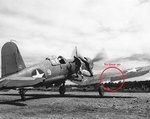swampyankee
Chief Master Sergeant
- 4,161
- Jun 25, 2013
The Hellcat was optimized for lower altitude performance than either the Merlin P-51 or any P-47, simply because high altitude bombers had a hard enough time hitting a stationary target, let alone a moving ship.
That said, the Hellcat did serve in the ETO, but wasn't involved in air combat to any significant degree. It would most certainly be competitive; several aircraft noted as failures in the Pacific did quite well in Europe, and the Hellcat and Corsair were successful there.
The P-51, in all the reports I have seen, has quite the lowest zero-lift drag coefficient of any single piston engine fighter, about 0.017, vs almost all others, between 0.022 and 0.025. In other words, it was probably the most efficient single-engine fighter with pistons banging back and forth.
That said, the Hellcat did serve in the ETO, but wasn't involved in air combat to any significant degree. It would most certainly be competitive; several aircraft noted as failures in the Pacific did quite well in Europe, and the Hellcat and Corsair were successful there.
The P-51, in all the reports I have seen, has quite the lowest zero-lift drag coefficient of any single piston engine fighter, about 0.017, vs almost all others, between 0.022 and 0.025. In other words, it was probably the most efficient single-engine fighter with pistons banging back and forth.


